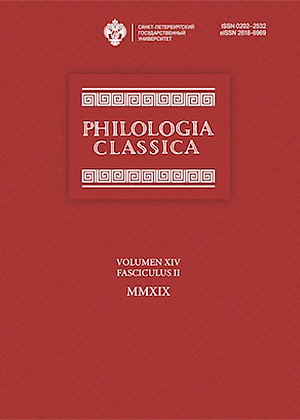Macrobius, Saturnalia 3. 9 and the Roman Cult of Iuno Caelestis
DOI:
https://doi.org/10.21638/11701/spbu20.2019.203Аннотация
The cult of Tanit, the patron goddess of Carthage, known to the Romans as Iuno Caelestis, had long been thought to have been transferred to Rome during the rule of Septimius Severus, as a number of inscriptions and coins mentioning or depicting the deity date back to this period. More recently, an alternative hypothesis was proposed, disputing the importance of this evidence and suggesting that the worship of Iuno Caelestis had been introduced by Elagabalus, along with a Carthaginian statue of the goddess that had been wed to his own divine patron. This article aims to defend the original dating by examining a ritualistic formula preserved by Macrobius, according to which Iuno Caelestis was summoned to Rome by Scipio Aemilianus at the end of the Third Punic War. The article argues that while the formula itself is most likely apocryphal, the information it contains still constitutes an etiological legend of the Roman cult’s foundation, and it would not exist if the cult did not. Therefore, the reign of Septimius Severus, the time period when the formula was recorded by Macrobius’ own source, Serenus Sammonicus, can be used as a terminus ante quem for the purposes of dating the cult’s transfer.
Ключевые слова:
Elagabalus, evocatio, Iuno Caelestis, Macrobius, religion, Serenus Sammonicus, Septimius Severus
Скачивания
Библиографические ссылки
Загрузки
Опубликован
Как цитировать
Выпуск
Раздел
Лицензия
Статьи журнала «Philologia Classica» находятся в открытом доступе и распространяются в соответствии с условиями Лицензионного Договора с Санкт-Петербургским государственным университетом, который бесплатно предоставляет авторам неограниченное распространение и самостоятельное архивирование.






